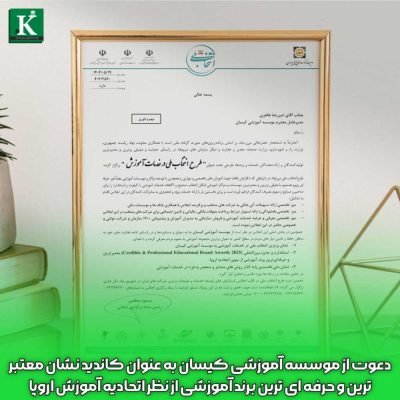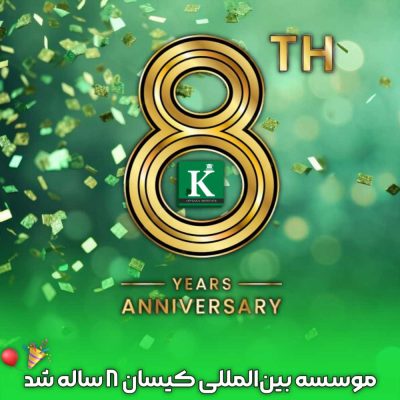شعبه سوم موسسه آموزشی کیسان در لواسان

شعبه سوم موسسه آموزشی و فرهنگی کیسان در لواسان افتتاح گردید.
پیرو جلسه ای که روز پنجشنبه مورخ ۱۳۹۹/۰۴/۲۶ در دفتر مرکزی موسسه آموزسی و فرهنگی کیسان برگزار شد، امیررضا
طاهری(مدیرعامل موسسه آموزشی کیسان) مهندس سید مسیح رودکی را به عنوان نماینده خود در شهرستان لواسان معرفی کرد.
شعبه سوم کیسان از روز شنبه مورخ ۱۳۹۹/۰۴/۲۸ در لواسان بلوار امام خمینی نبش گلهای سوم رسما فعالیتش را آغاز میکند.
شعبه اول موسسه کیسان در تهران محله یوسف آباد و شعبه دوم نیز، تهران در محله میرداماد، پیشتر افتتاح گردیده بود.
(همواره با افتخار در خدمتیم)
شماره تماس نمایندگی لواسان: ۰۲۱۲۶۵۴۰۰۵۴
مدیریت نمایندگی : مهندس سید مسیح رودکی
موسسه کیسان با هدف خدمت رسانی عالی آموزشی توسط امیررضا طاهری افتتاح شد.
موسسه کیسان با کادر فوق مجرب و زبده با بهترین و نوین ترین سیستم آموزشی آماده برگزاری هر گونه کلاس آموزشی برای تمامی گروه
سنین می باشد.
این موسسه دارای تمامی ۶ دپارتمان ( تقویتی ، کنکور ، زبان خارجه ، کامپیوتر، مهارت فردی، مشاوره ) و ۲۰ دوره ی آموزشی به صورت گروهی
و نیمه گروهی و همچنین تدریس خصوصی میباشد.
دپارتمان کنکور و تقویتی و مهارت فردی از جمله محبوب ترین دپارتمان های موسسه آموزشی کیسان میباشد.
تمامی دانش آموزان و اساتید موسسه دارای کد کاربری و پرتال شخصی هستند که می توانند از امکانات مهیج سایت بهره مند شوند.
در موسسه آموزشی کیسان از تمامی متد های روز دنیا جهت بهبود کیفیت بهره برده میشود.
همچنین موسسه آموزشی کیسان،تنها موسسه آموزشی در کشور میباشد که در دو سال متوالی،(۹۶ و ۹۷) موفق به کسب عنوان برند برتر
آموزشی سال شده است.
موسسه اموزشی و فرهنگی کیسان به انتخاب مردمی محبوب ترین اموزشگاه کنکور کشور انتخاب شده است
امیررضا طاهری،مدیر عامل موسسه آموزشی کیسان نیز، عنوان کارآفرین نمونه جوان کشور را در سال ۹۷ از آن خود کرده است.
از حامیان این موسسه آموزشی، میتوان به سازمان شهرداری منطقه ۶ سازمان توسعه و مدیریت،دانشگاه علامه طباطبایی،
در اموزشگاه کنکور کیسان جلسه اول رایگان میباشد
جهت کسب اطلاعات بیشتر و یا ثبت نام دوره های آموزشی با شماره های موسسه تماس حاصل بفرمایید:
میرداماد میدان مادر خیابان شاه نظری کوچه دوم پلاک ۱۵ واحد ۱۰
02122251323
۰۹۰۲۹۰۸۲۸۰۷
هم اکنون آماده ارائه بهترین کیفیت آموزشی به شما دانش آموزان و دانشجویان عزیز و گرانقدر میباشیم.
موسس و مدیر عامل : امیررضا طاهری
موسسه اموزشی و فرهنگی کیسان همواره با افتخار در خدمت شماست







دیدگاهتان را بنویسید